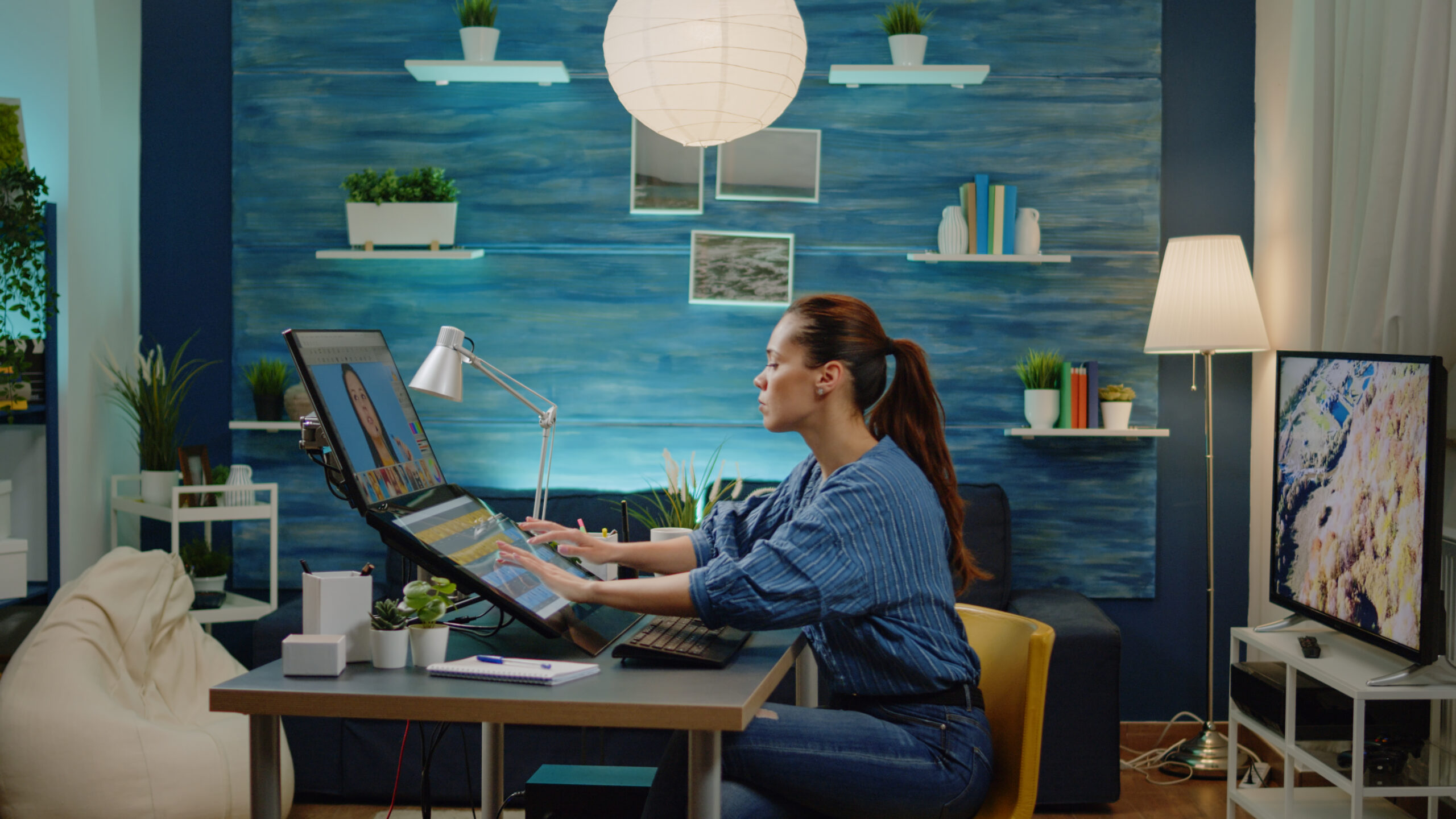Table of Contents
In today’s digital age, the world of graphic design has opened up an array of opportunities for creative individuals to embark on a fulfilling journey right from the comfort of their homes. The internet has revolutionized the way we work and communicate, making it easier than ever to pursue a career in graphic design without the need for a traditional office setup. In this comprehensive guide, we will delve into the intricacies of mastering graphic design from home, providing you with valuable insights and actionable steps to kickstart your creative journey.
The Rise of Home-Based Graphic Design
The advent of the internet has ushered in a new era for graphic designers. With the world at their fingertips, aspiring designers can now harness the power of technology to create stunning visuals, develop compelling branding, and craft captivating marketing materials—all from the comfort of their own homes. The demand for digital content is skyrocketing, offering an abundance of opportunities for those willing to seize them.
Setting the Foundation: Essential Skills
Before delving into the world of graphic design, it’s crucial to equip yourself with the necessary skills. Here’s a breakdown of the fundamental skills you need to master:
1. Graphic Design Software Proficiency
You must master industry-standard tools, such as Adobe Creative Cloud, which includes Photoshop, Illustrator, and InDesign, if you want to excel at graphic design. These resources allow you to realize your artistic concepts, and they are the lifeline of a graphic designer. And Other best free graphic Design Apps.
2. Creativity and Visual Sensibility
Graphic design is inherently artistic. It requires a keen eye for aesthetics, an understanding of colour theory, and an ability to create visually appealing compositions. Cultivate your creativity by exploring different art forms and styles.
3. Typography Mastery
Typography is a fundamental aspect of graphic design. Understanding the principles of typography, including font selection, spacing, and alignment, will enable you to create designs that are not only visually appealing but also highly readable.
4. Communication Skills
Effective communication is vital for any graphic designer,
whether you’re collaborating with clients or working within a team. Clear
communication ensures that your designs align with the client’s vision and
objectives.
Building Your Home-Based Graphic Design Studio
Now that you’ve honed your skills, it’s time to set up your home-based graphic design studio. Here’s how to create an efficient and inspiring workspace:
1. Choose the Right Equipment
Invest in a powerful computer with ample RAM and a high-resolution monitor. A graphics tablet can also enhance your precision and creativity when working on projects.
2. Create a Design-Focused Environment
Design your workspace to reflect your creativity. Surround yourself with inspiring artwork, colour swatches, and design books to keep your creative juices flowing.
3. Organize Your Files and Projects
Maintain a structured filing system for your projects. This will help you stay organized and easily access your work when needed.
Navigating the Home-Based Graphic Design Market
With your skills and workspace in place, it’s time to step into the competitive world of home-based graphic design. Here’s how to make a mark:
1. Build a Strong Portfolio
Your portfolio is your calling card in the world of graphic design. Showcase your best work to potential clients, demonstrating your versatility and creativity.
2. Networking and Online Presence
Connect with fellow designers and potential clients through social media platforms and online communities. A strong online presence can lead to valuable collaborations and projects.
3. Freelancing and Gig Platforms
Websites like Upwork, Fiverr, and Freelancer provide a platform to find freelance graphic design gigs. These platforms are an excellent way to gain experience and build your client base.
How to Start Graphic Designing at Home: A Summarized Roadmap
To summarise your journey towards mastering graphic design from home:
Skills: Develop proficiency in graphic design software, cultivate creativity, master typography, and enhance communication skills.
Workspace: Create an efficient and inspiring home-based studio with the right equipment and a design-focused environment.
Market Entry: Build a strong portfolio, establish an online presence, and explore freelance opportunities on gig platforms.
In conclusion, graphic design offers an exciting and rewarding career path that you can embark on from the comfort of your own home. By honing your skills, creating an inspiring workspace, and actively pursuing opportunities in the field, you can position yourself for success in the ever-expanding world of graphic design.

